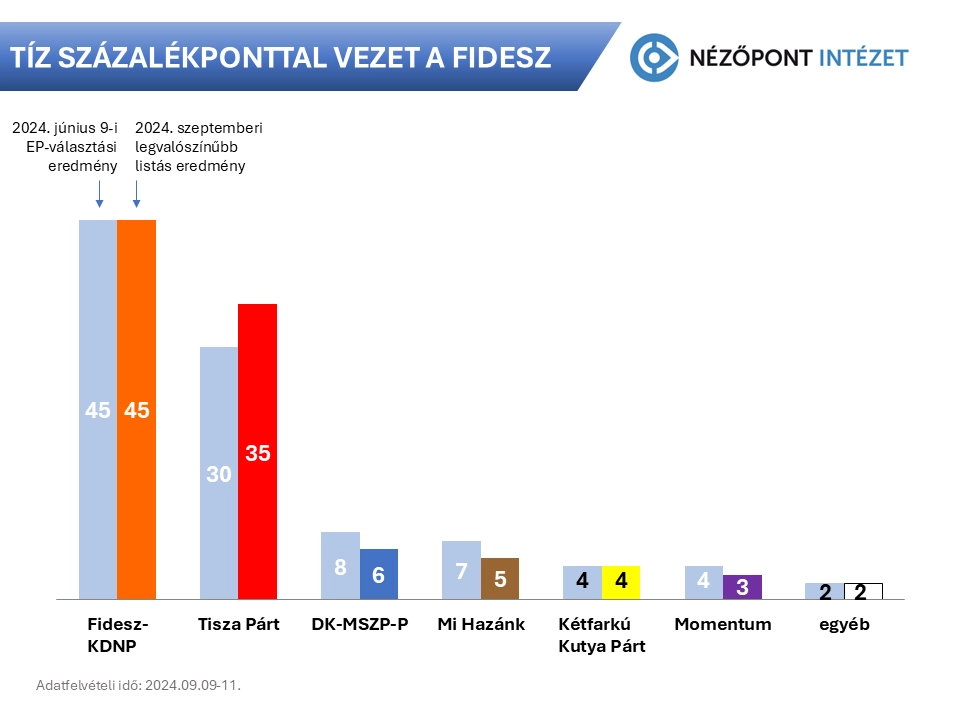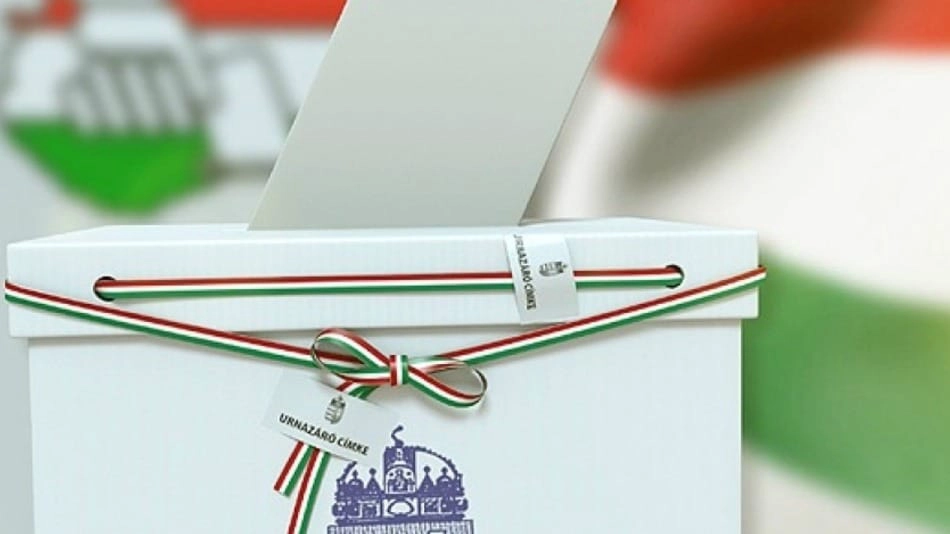The support for Fidesz-KDNP (45 percent) has remained unchanged since the EP election in June, which would mean a comfortable majority if a parliamentary election were held this Sunday. The Tisza Party has gained 5 percentage points (35 percent), but its additional supporters are not new voters but former supporters of the other opposition parties. Over the last three months, support for the Gyurcsány coalition (6 percent), Mi Hazánk (5 percent) and Momentum (3 percent) has also weakened.
An eventful political season is expected, with much excitement already at the start. Three months after the EP elections, it’s worth taking a deeper look at the state of the political race. The survey of the Nézőpont Institute was conducted between 9 and 11 of September, before the flooding situation. The survey has outlined four theses ahead of the September political season:

1. Fidesz has maintained its support
The governing parties have 45 percent support among those who would participate in a parliamentary election held this Sunday, which represents an unchanged support base compared to the result of the European Parliament elections in June. There is no change in the total adult population either. In January – and currently as well – more than one in three (34 percent) adults were identified as supporters of the governing party. Thus, according to the research, the myth of “disillusioned Fidesz supporters” is unfounded.
2. Péter Magyar’s party is cannibalising the voters of the opposition parties
Although the Tisza Party has managed to increase its popularity by 5 percentage points since the EP elections, its 35 percent support among active voters remains significantly below the support for the governing parties. The rise of the Tisza Party has been accompanied by the weakening of the other opposition parties, which is not a surprising result given the unchanged popularity of Fidesz. In the EP elections, besides the Tisza Party, the other opposition parties could still gather 25.6 percent of the votes, but according to the Nézőpont Institute, this share would now barely reach 20 percent, meaning that the Tisza Party has “cannibalised” a fifth of their voters. The Gyurcsány coalition (currently at 6 percent) and Mi Hazánk (currently at 5 percent) have lost 2-2 percentage points, and Momentum has lost 1 percentage point (currently at 3 percent).
3. Fidesz would win a clear victory in a parliamentary election
The governing parties are not only the most popular, they also have the largest reserve of supporters. There are roughly 300,000 Hungarian voters who sympathise with Fidesz-KDNP but who are not yet sure whether they would participate in a parliamentary election if it were held this Sunday. Thus, in the total adult population there are about 2.8 million mobilisable sympathisers and, with a 70 percent willingness to participate as measured by the Nézőpont Institute, there are currently 2.5 million active voters for the governing party.
It is interesting to note that the Tisza Party has less reserves than the governing parties, with about 170,000 sympathisers who are uncertain about participating in a parliamentary election. Among the total adult population, the Tisza Party currently has less than 2.2 million sympathisers and approximately 2 million active voters.
The outcome of the 2026 parliamentary election could be determined by how well the governing parties are able to mobilise. If Fidesz is able to mobilise its currently inactive supporters, it could even approach the number of votes it received in the 2022 election (2.8 million domestically).
4. There would be a four-party parliament if an election were held “this Sunday”
If the election were held “this Sunday”, only the Fidesz-KDNP, the Tisza Party, the Democratic Coalition (DK), and possibly the Our Homeland Movement (Mi Hazánk) would get into the parliament. Despite the DK’s 14 percent support at the beginning of the year, and despite Ferenc Gyurcsány’s recent activism, the DK is struggling to stay above the parliamentary threshold. Apart from the DK, only the Our Homeland Movement (Mi Hazánk) has managed to stabilise its voter base above the threshold. If the election were held now, a four-party parliament would be formed, but both Mi Hazánk and Ferenc Gyurcsány’s DK would need some luck to make it into the parliament.
Methodology
The latest opinion-poll of the Nézőpont Institute was conducted between 9 and 11 of September, 2024, by interviewing 1,000 respondents by phone. For all surveys, the sample is representative of the adult population (18 years and older) by gender, age, region, type of settlement and education. In case of a sample size of 1000 respondents and a confidence level of 95 percent, the margin of sampling error is ± 3.16 percent. The data have been rounded to the nearest whole number, so their sum may not add up to exactly 100. Respondent base = Hungarian voters, respondents who are willing to participate in a national parliamentary election.

